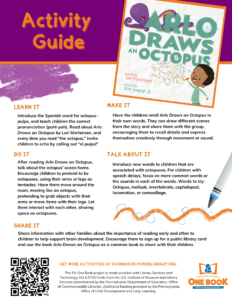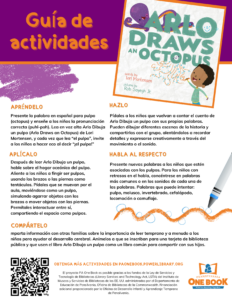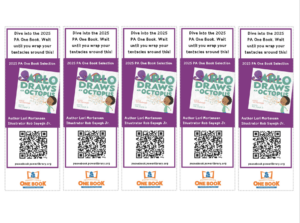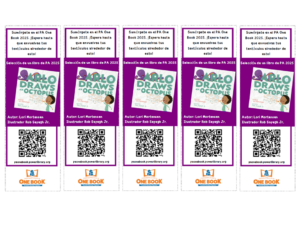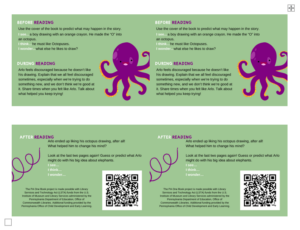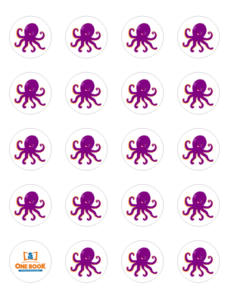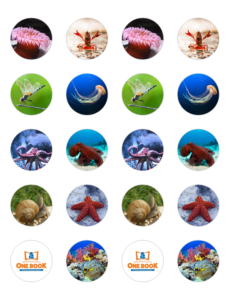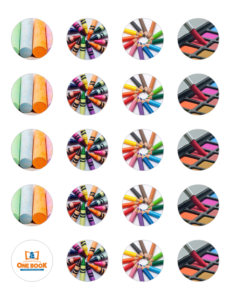PA One Book Activities for Arlo Draws an Octopus
The Pennsylvania One Book initiative is a valuable program that highlights the importance of early literacy development in preschoolers and the significance of reading early and often to children, as well as engaging them in conversation and other activities around books. The program has remained successful in part due to the partnership of collaborating agencies that all support early childhood literacy efforts.
Printable Activity Guides
Additional Printable Resources
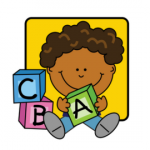
Activities Supporting Learning through Play
Activity Title: Octopus Adventure
Corresponding PA Early Learning Standard: 15.2.PK.A (Developing relationships with peers and adults)
Materials: None
Instructions:
- After reading Arlo Draws an Octopus, talk about the octopus’ ocean home.
- Encourage children to pretend to be octopuses, using their arms or legs as tentacles.
- Have them move around the room, moving like an octopus, pretending to grab objects with their arms or move items with their legs.
- Let them interact with each other, sharing space as octopuses.
Activity Title: Attach the Arms on the Octopus
Corresponding PA Early Learning Standard: AL.1 PK.C Engage in complex play sequences with two or more children
Materials: Felt; any type of paper, like wrapping paper, newspaper, construction paper; tape
Instructions:
- If using felt, place an octopus silhouette on a felt-board and have children add octopus tentacles also made out of felt.
- If using paper, tape an octopus silhouette to the wall or lay on a flat surface and have children add tentacles cut out of paper.
Activity Title: Sensory Play – Underwater Scene
PA Early Learning Standard: AL.2. I.A Interact with others, objects, or activities for short periods of time.
Materials: Playdough, toy fish, seashells, blue fabric (for water)
Instructions:
Set up a sensory table or tray where children can create an underwater scene. Use playdough to form sea creatures, allowing the children to bring the ocean to life. Incorporate key vocabulary throughout the play to encourage comprehension. Words to try: Octopus, mollusk, invertebrate, cephalopod, locomotion, or camouflage.
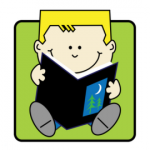
Activities Supporting Language and Literacy
Activity Title: Describe Your Octopus
Corresponding PA Early Learning Standard: 1.5.PK.A (Participate in collaborative conversations)
Materials: Paper, crayons, markers, or paint
Instructions:
- Have children draw (or paint) their own octopus, like Arlo does in the book.
- Encourage them to describe their octopus to a partner or group.
- Ask questions like, “What is your octopus doing?” or “What is special about your octopus?” to enhance vocabulary.
Activity Title: An Ocean of New Words
Summary: Choose multiple words from the story that children may be unfamiliar with and teach them the meaning/definition. It may be fun to use an octopus design and place one word on each arm of the octopus.
Activity Title: El Pulpo
Corresponding PA Early Learning Standard: 1.5 PK.G Demonstrate command of the conventions of standard English when speaking based on prekindergarten level and content
Materials: None
Instructions:
- Introduce the Spanish word for octopus- pulpo, and teach children the correct pronunciation (puhl-poh).
- Read aloud Arlo Draws an Octopus by Lori Mortensen, and every time you read “the octopus,” invite the children to echo by calling out “el pulpo!”
Activity Title: Retell the Story
Corresponding PA Early Learning Standard:
Materials: Paper, pencils, markers
Instructions: Have the children retell Arlo Draws an Octopus in their own words. They can draw different scenes from the story and share them with the group, encouraging them to recall details and express themselves creatively through movement or sound.
Activity Title: What Word?
Materials: Books or videos about octopuses
Instructions: Introduce new words to children that are associated with octopuses. Try these words in discussion.
- Mollusk: a kind of animal with a soft body
- Invertebrate: an animal without a backbone
- Cephalopod: ‘head-foot’ because of the way the legs are attached to the head
- Locomotion: movement from one place to another
- Camouflage: a way of hiding something by covering or coloring it so that it looks like its surroundings.
Suggested videos:
- Octopus – Animal of the Day | Educational Animal Videos for Kids, Toddlers and Preschool Children (YouTube, 2:41) youtu.be/EmcdhDUQzik?si=Jziu8E_AhXX-adhj
- Octopuses HAVE 3 HEARTS and BLUE BLOOD! | Wild Bites | BBC Earth Kids (YouTube 4:58) youtu.be/vckaanafytg?si=DCAZuQBXCzNo_VP0
- All About The Octopus – Facts for Kids (YouTube 6:39) youtu.be/4v4qUW3zI7s?si=ZpswCRsZr8430vM6
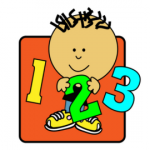
Activities Supporting Mathematical Thinking
Activity Title: Counting Tentacles
Corresponding PA Early Learning Standard: 2.1.PK.A.2 (Count to tell the number of objects)
Materials: Cutouts of octopuses, markers
Instructions:
- Provide children with octopus cutouts that have different numbers of tentacles.
- Ask them to count the tentacles and help them write the correct number on each octopus.
- For an added challenge, ask them to draw additional tentacles to make the octopus have eight.
Activity Title: Measuring Our World
Materials: Measuring Tape
Instructions: Octopuses vary greatly in size. The smallest species is about 2 inches long, and the largest species may grow to 18 feet in length and have an arm span of almost 30 feet! The common octopus can grow to about 4.3 feet in length and weigh up to 22 pounds.
- Using a measuring tape, show children the differences between inches and feet on the measuring tape.
- Find two inches on the measuring tape, then ask how many items they can find that are two inches long (the smallest octopus).
- Find four feet on the measuring tape, then ask how many items they can find that are four feet long (the common octopus).
- Does the measuring tape stretch to 18 feet? If it does, is there anything they can find that is 18 feet? If it doesn’t, how far does the measuring tape stretch?
Activity Title: Our Weighty World
Materials: scale (like a bathroom or kitchen scale)
Instructions: The giant Pacific octopus (Enteroctopus dofleini) is often cited as the largest known octopus species. Adults usually weigh around 15 kg (33 lb). The common octopus can weigh up to 22 pounds.
- Talk with children about how the weight of an item is measured in grams, kilograms, pounds or ounces.
- Using a scale, weigh different items, like a block, books, toys, etc.
- Talk about how to tell how much each item weighs, then guess which item will weigh more or less.
- What happens if more items are added to the scale, like four, five or six blocks?
- Are there any items which have different shapes, but weigh the same?
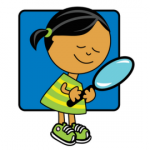
Activities Supporting Scientific Thinking and Technology
Activity Title: No Bones About It: Octopus Science Experiment
Corresponding PA Early Learning Standard: 3.1 PK.A.9 Participate in simple investigations about living and/ or non-living things to answer a question or to test a prediction
Materials: Zip top plastic bag; water; crayon or markers; scissors; paper bowl or cardboard box; tape; Popsicle sticks
Instructions:
- In advance, draw an outline of an octopus on a resealable plastic bag and fill it with water. Cut a small hole in a paper bowl or cardboard box.
- Talk about how octopuses don’t have bones and introduce the word invertebrate (animals without a backbone). That’s how they squeeze into tiny places.
- Demonstrate how the octopus (plastic bag) squeezes through the hole.
- Then, attach the popsicle sticks to the bag with tape. Ask the kids, if the octopus had bones, could it still squeeze through the hole?
- Make this a science demonstration, or double bag (and tape) the octopus before letting children play by squeezing it through the hole.
Activity Title: Octopus Facts
Corresponding PA Early Learning Standard: 3.1.PK.A.5 (Explore living things)
Materials: None
Instructions:
- Share simple facts about real octopuses, such as their ability to camouflage and their soft bodies.
- Show pictures of real octopuses and compare them to Arlo’s drawn version.
- Encourage questions and discussions about what real octopuses can do.
Activity Title: Living In the Water
Materials: None; optional books or videos
Instructions: There are over 700,000 different species of animals that live in the water, all of different shapes and sizes. Living in the water is different from living on land, and animals that live in a body of water for all or most of their lifetime are called aquatic animals.
- Read books or watch videos about animals that live in the water. Identify different types of aquatic animals.
- What is different about aquatic animals than the ones who live on land (terrestrial animals)? Discuss how animals who live in water might look different than the ones living on land (example: gills, flippers, fur, etc.)
- Talk about what might be different living in the water than living on land (example: temperature, light, pressure, breathing, etc.)
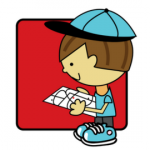
Activities Supporting Social Studies Thinking
Activity Title: Where Do Octopuses Live?
Corresponding PA Early Learning Standard: 5.2.PK.A (Identify community workers and their roles)
Materials: World map or globe
Instructions:
- Show children where oceans are on a world map or globe.
- Talk about how octopuses live in oceans around the world.
- Connect it to the community by discussing people who work to protect ocean environments, like Marine biologists, Conservation scientists, Oceanographers, and Environmental educators.
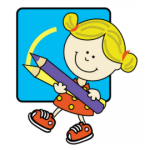
Activities Supporting Creative Thinking and Expression
Activity Title: Freeze Dance
Corresponding PA Early Learning Standard: 9.1.M PK.E (Use imagination and creativity to express self through music and dance)
Materials: Shaker eggs, rhythm instruments. Make your own shakers by adding dry beans or rice to a small box or container and taping it closed.
Instructions:
- Play the song “Octopus’s Garden” by Raffi, and children can dance and move, playing their instruments to the music.
- Every so often, pause the song, and the children have to freeze their movement and their shakers.
Activity Title: Octopus Art
Corresponding PA Early Learning Standard: 9.1.V.PK.A (Use a variety of art materials to create works of art)
Materials: Construction paper, glue, markers, googly eyes, colored paper strips
Instructions:
- Provide each child with a paper circle to represent the octopus’ body.
- Let them glue strips of colored paper around the circle to represent tentacles.
- Have them add googly eyes and decorate their octopus with markers or other craft materials.
Activity: Color Matching Octopus Song
Corresponding PA Early Learning Standard: 9.1.M.PK.E (Demonstrate a response to music)
Materials: Paper cutouts of octopuses in different colors (red, blue, green, yellow, etc.)
Instructions:
- Before singing the song, give each child a colored octopus cutout.
- Sing “Orange Octopus” to the tune of “If You’re Happy and You Know It,” Credit: www.dltk-teach.com/alphabuddies/songs/o/orangeoctopus.htm
- As each color is mentioned, children holding that color octopus will wave it or show it.
- Continue with different colors, repeating verses for each one.
- Encourage children to move their octopus to the beat of the song, enhancing their musical response.
Activity Title: Rhyme: Eight Arms
Corresponding PA Early Learning Standard: 9.1.M PK.A (Know and use basic elements and principles of music and movement)
Materials: None
Instructions: Sing to the tune of “Did You Ever See a Lassie?”
Once I saw an octopus, an octopus, an octopus,
Once I saw an octopus down deep in the sea.
Then out came her eight arms, (wiggle your arms)
Her eight arms, her eight arms,
Then out came her eight arms to swim with me!
Activity Title: Rhyme: The Arms on the Octopus
Corresponding PA Early Learning Standard: 9.1.M PK.E Use imagination and creativity to express self through music and dance.
Materials: None
Instructions: Sing to the tune of “The Wheels on the Bus”
The octopus arms go grab, grab, grab
Grab, grab, grab
Grab, grab, grab
The octopus arms go grab, grab, grab
All through the sea
(Repeat with other motions: Swish, Swim, Pat, etc.)
Activity Title: Rhyme: The Octopus
Corresponding PA Early Learning Standard: 9.1.M PK.A (Know and use basic elements and principles of music and movement)
Materials: None
Instructions: Sing to the tune of “Three Blind Mice:”
Octopus, octopus (clap out each syllable)
In the sea, in the sea
To swim, they use their eight arms
They use their color to hide from harm
They live in the sea, not on a farm
Octopus, octopus
Activity Title: Make a Toilet-Paper Roll Octopus
Corresponding PA Early Learning Standard: 9.1.V PK.E (Use imagination and creativity to express self through visual arts)
Materials: Cardboard tubes (toilet-paper roll size); Orange construction paper; Glue; Black markers; Scissors; googly eyes; orange-colored paper strips
Instructions:
- Wrap the toilet paper roll in orange paper.
- Cut out eight strips of orange paper for tentacles.
- Curl the strips around a marker to the half-way point, and then remove the marker.
- Glue the tentacles inside one end of the tube, so that the curled ends of the tentacles stick out.
- Glue on two googly eyes and draw a mouth on the octopus body.
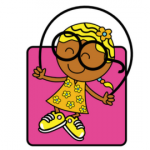
Activities Supporting Health, Wellness and Physical Development
Activity Title: Mar y Tierra Game
Corresponding PA Early Learning Standard: 10.4 PK.A Demonstrate coordination of body movements in active play.
Materials: Rope or bright tape (duct, masking, or painter’s); Paper and markers
Instructions:
- Use a rope to divide a large space into two halves, or mark a line with thick, colorful tape.
- One side is la mar (ocean) and the other side is la tierra (land). Label each side with a sign.
- The children line up along the middle line.
- The leader yells the side they need to jump into, either “mar” or “tierra,” and all the children have to move to that side. If someone ends up in the wrong place, they are out for the rest of that round.
- You can use different words to trick the group, like “marinero” or “margarine” instead of mar or “terrestre” or “tiramisu” instead of tierra.
Activity Title: Octopus Movement
Corresponding PA Early Learning Standard:
Materials: Optional: Ocean Sounds
Instructions: Talk about how octopuses move, then have children pretend to be an octopus. They can crawl, swim, and wiggle around the room, practicing their gross motor skills.
Activity Title: Octopus Stretch
Corresponding PA Early Learning Standard: 10.4.PK.B (Engage in physical activities that promote strength, flexibility, and stamina)
Materials: None
Instructions:
- Lead children in an octopus-themed stretching routine.
- Have them stand tall and stretch their arms and legs like an octopus reaching out with its tentacles.
- Encourage bending, reaching, and moving all around while stretching.
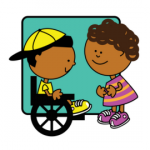
Activities Supporting Social Emotional Development
Activity Title: Compliment the Artist
Corresponding PA Early Learning Standard:
Materials: Paper; crayons, pencils or markers; stickers; index cards, Post-its or pieces of paper to use as a compliment card.
Instructions:
- Children draw their own octopuses using the materials provided.
- After the children finish drawing, organize a gallery walk. Have the children walk around and look at each other’s drawings, just like in an art gallery.
- Each child will receive a compliment card on which they will record something positive about another child’s artwork. Younger children can give verbal compliments or use stickers to show appreciation. Older children can write or draw their appreciation. Encourage children to share specifics of what they see in each drawing.
- At the end of the activity, gather the children in a circle and let them share the compliments they received on their artwork.
Activity Title: Words for Feelings
Materials: None. Optional: paper and drawing or painting materials
Instructions: In the book, Arlo initially feels discouraged when he cannot draw an octopus. His friends also have challenges with things they try. Talk with children about things they can do and things they have challenges doing. Introduce other words that might describe how they feel when they do something (like excited, accomplished, proud, amazed, powerful) and when they do something challenging (like perturbed, scared, frustrated, confused, excited).
Ask them to draw faces of how they may look when they feel these emotions. For help, check out the Feeling Faces Cards from the National Center for Pyramid Model Innovations (challengingbehavior.org/docs/FeelingFaces_chart_template.pdf)
Activity Title: Frustrating Feelings
Materials: None
Activity: Talk about what Arlo does in the book when he feels discouraged and frustrated with his drawing process. How do we know Arlo was feeling discouraged and frustrated? Share some things children could do when they feel discouraged or frustrated. Check out Promoting Social, Emotional and Behavioral Health (ages 3-5 years) from Bright Start. Bright Kids. Bright Future. for tips. (www.pakeys.org/wp-content/uploads/2021/10/SE2101_ECPAC_Parent_Gen_d_3-5y.pdf)
Activity Title: Taking Turns with Tentacles
Corresponding PA Early Learning Standard: 16.2.PK.A (Recognize the importance of sharing and taking turns)
Materials: None
Instructions:
- During the reading, point out how Arlo interacts with his drawing.
- Afterward, encourage children to take turns drawing their own imaginary octopus on the ground (using their finger or an imaginary paintbrush).
- Emphasize waiting for their turn and letting others have a chance.
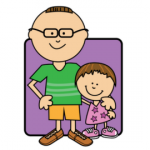
Activities Supporting Partnerships for Learning
Activity Title: Family Ocean Adventure
Corresponding PA Early Learning Standard: 20.2.PK.A Engage in activities that encourage families to be part of the learning
Materials: None
Instructions:
- Encourage families to go on a virtual ocean tour connecting with area science museums or universities or by using free online videos.
- Suggest they read Arlo Draws an Octopus together afterward, discussing the differences between the book’s drawings and real-life ocean creatures.
Activity Title: Paper Plate Octopus Craft
Corresponding PA Early Learning Standard: PL 3: Families have the support and information they need to encourage their children’s learning and development.
Materials: Paper plates; Single hole-punch; Yarn or string; googly eyes
Instructions:
- Punch eight holes along the edge of a paper plate.
- With the help of caregivers, children string eight pieces of yarn through the holes to make the octopus’s tentacles.
- Caregivers tie the string once threaded through the holes.
- Add googly eyes and other facial features to the octopus.
- After the octopus craft is completed, families can use their octopus as a prop to move along and sing the following rhyme:
Did You Ever See an Octopus? (Tune: Did You Ever See a Lassie?)
Did you ever see an octopus, an octopus, an octopus?
Yes, I saw an octopus, down in the sea.
Then it reached its eight arms, its eight arms, its eight arms
Then it reached its eight arms out to swim with me.
Activity Title: Art in Our Community
Materials: None
Instructions: Pennsylvania has many art museums throughout the state. Pick a museum in your community to visit with your child. While there, talk about the different types of art, like paintings, drawings, or sculpture. What is their favorite and why?
Check out the listing of art museums in Pennsylvania whichmuseum.com/place/pennsylvania-8934/art. Your local library may offer no-cost passes for local museums, or check out the Art-Reach program www.art-reach.org or the Museums for All program museums4all.org.
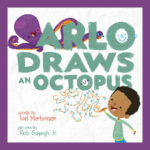
Supplemental Book List
- The Artist – Ed Vere
- How this Book Got Red – Margaret Chiu Greanias
- The Rainbow Fish by Marcus Pfister
- Pete the Cat: Scuba-Cat by James Dean
- Swimmy by Leo Lionni
- Commotion in the Ocean by Giles Andreae
- Inky the Octopus by Erin Guendelsberger
- Inky’s Amazing Escape: How a Very Smart Octopus Found His Way Home– Sy Montgomery
- Octopants by Suzy Senior
- I’m the Biggest Thing in the Ocean by Kevin Sherry
- The Dot– Peter H. Reynolds
- The Book of Mistakes– Corinna Luyken
- Ish– Peter H. Reynolds
- It’s Okay to Make Mistakes– Todd Parr
- Jeremy Draws a Monster– Peter McCarty
- Harold and the Purple Crayon– Crockett Johnson
- A Journey Under the Sea– Craig Foster & Ross Frylinck
- The Octopus Escapes– Maile Meloy
- My Octopus Arms– Keith Baker
- I Cannot Draw a Bicycle and I Cannot Draw a Horse– Charise Mericle Harper
- Milo Imagines the World– Matt de la Peña
- When I Draw a Panda– Amy June Bates
- Linus the Little Yellow Pencil– Scott Magoon
- Fern and Horn– Marie-Louise Gay
- I Don’t Draw, I Color!– Adam Lehrhaupt
- Niko Draws a Feeling– Bob Raczka
- A Squiggly Story– Andrew Larsen
- My Pen- Christopher Myers
- Draw!- Raúl Colón
